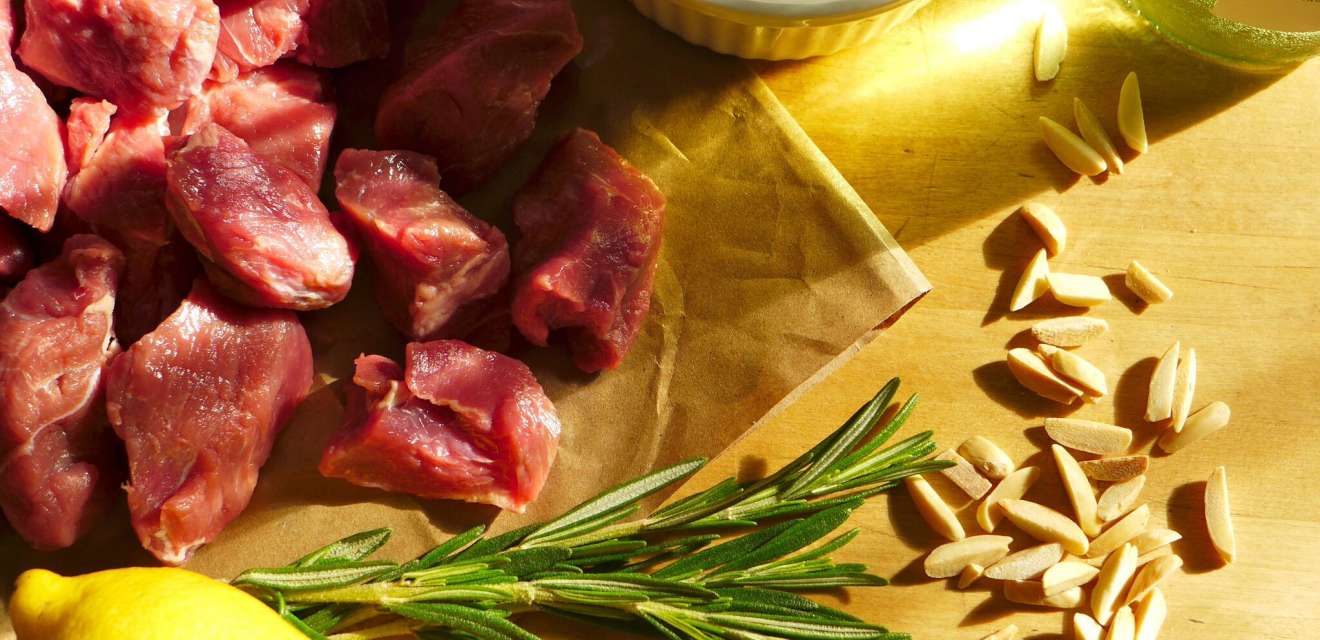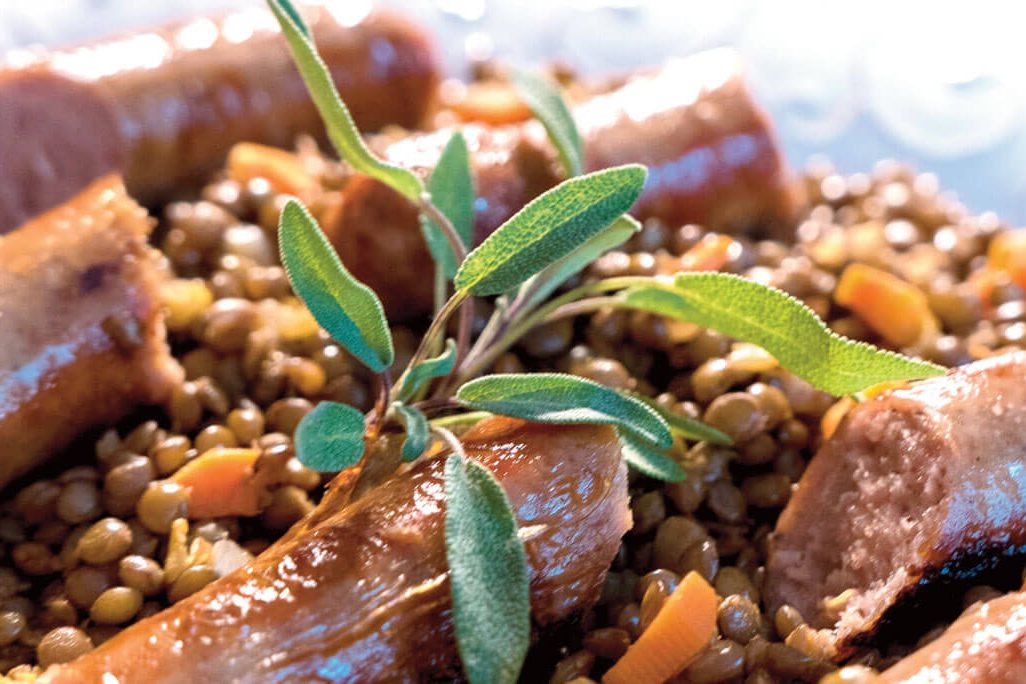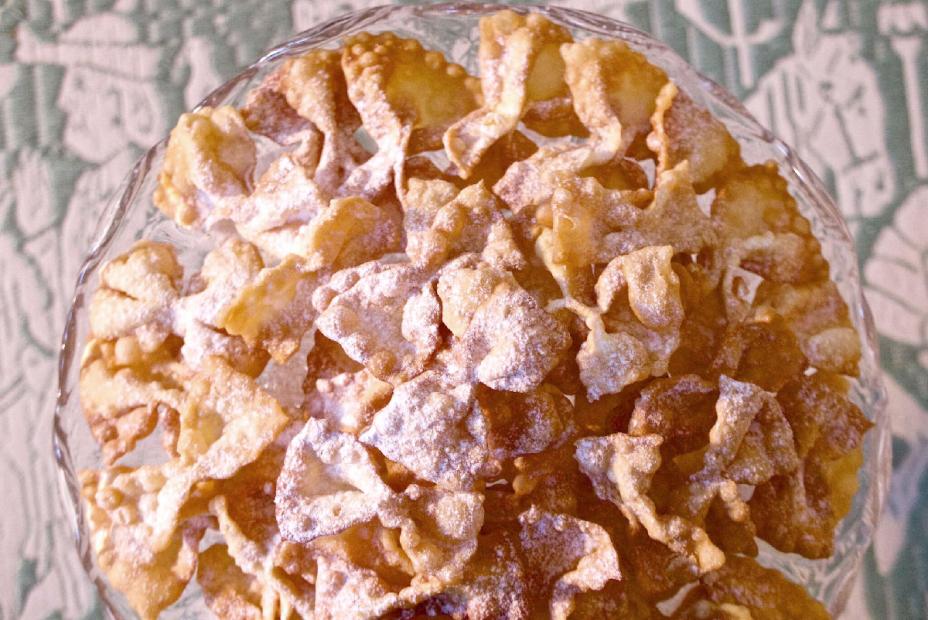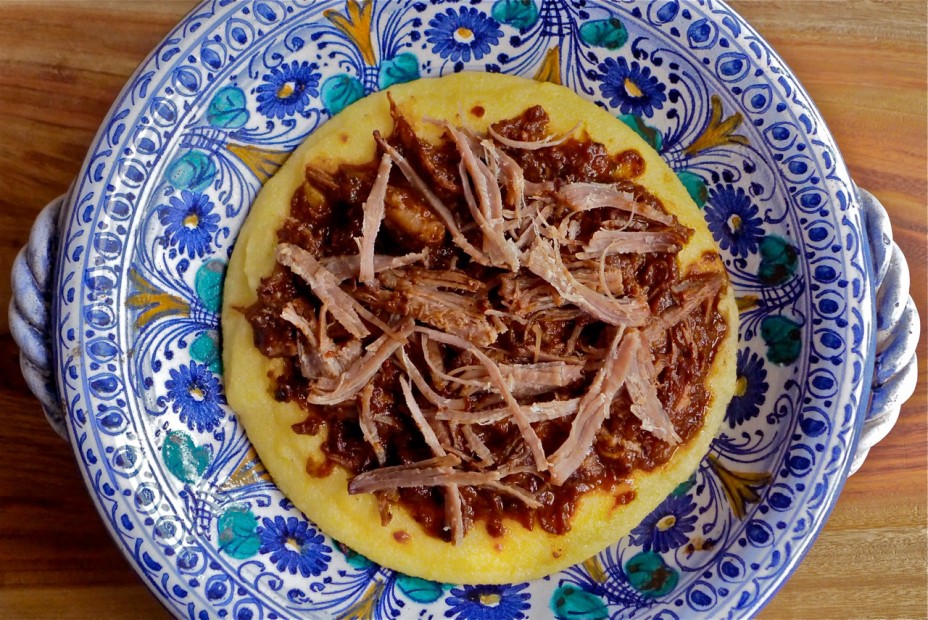Spezzatino, meaning “little bits of meat,” is Italian for stew, an infinitely more delicate description than our English counterpart. For the most part, an Italian braise is never pedestrian, but an intoxicating, gently simmered concoction of meat, wine, and aromatics. This simple, lemony spezzatino, my mother’s recipe, designed for an economy veal shoulder or shank cut that will stand up to gentle, lengthy cooking, is no exception. The strip of the fruit’s zest added in the last hour of simmering provides a counterpoint without overwhelming the delicate character of the veal. Crushed pine nuts swirled in during the last fifteen minutes adds richness and an inimitable flavor that only the Italian pinoli can deliver. (Chinese pine nuts are not recommended — see http://zesterdaily.com/ cooking/pistachio-pesto-is-answer-to-pine-nut-shortage/ for the reason; if Italian pine nuts are not available, substitute blanched almonds). The slow braising produces meltingly tender morsels of veal and enough gravy to sauce a pound of pureed potatoes or fresh farfalle, pappardelle, or tagliatelle.
“Spezzatino” of Boneless Veal Shank, Lemon, Rosemary, Pine Nuts
Serves 4
Recipe from The Classic Italian Cookbook ©Julia della Croce (DK Publishing, London and New York)
The ideal cuts for a stew are the shoulder and the shanks, which have enough fat and connective tissue to keep them tender during a slow, moist braise, and the gelatin in both of these cuts enable meat juices to thicken without the use of excess flour. Even with its abundant satiny sauce, the result is a tangy and refreshing stew. My mother’s original version was made using cut-up, bone-in veal shoulder steaks, a cut that may not be easy to find these days. Keeping the bone intact makes for a slightly messier presentation, but optimal flavor, since the most succulent meat is to be found close to the bones and gnawing at them is part of the pleasure of eating. If you substitute a bone-in cut, you’ll need more meat to serve the same number of people and you’ll want to adjust the quantities of the other stew ingredients in proportion to the weight of the meat.

• 6 tablespoons all-purpose flour
• 4 tablespoons unsalted butter
• 2 tablespoons extra-virgin olive oil
• 2 pounds boned veal shoulder or shank, cut into 1-1/2 inch cubes
• 3/4 cup good quality dry white wine
• 2 tablespoons finely minced fresh rosemary leaves, or 2 teaspoons well crushed dried rosemary
• 3 cups good veal or chicken broth
• 2 two-inch strips lemon peel, zest only
• 3/4 teaspoon salt, or to taste
• 1-2 tablespoons coarsely chopped, lightly toasted Italian pine nuts or blanched almonds
• 3/4 teaspoon, or to taste, freshly ground white or black pepper
• 1. Spread the flour out on a piece of waxed paper on your work surface, or in a wide plate.
• 2. Select an ample, wide and deep skillet, braiser, or Dutch oven. Heat half of the butter and olive oil together until sizzling hot. Meanwhile, dredge half of the veal in the flour and slip the meat into the skillet; brown over moderately high heat, turning once, until nicely colored on both sides, about 15 minutes in total. Transfer the meat to a platter and add the remaining butter and oil to the pan. Add the remaining meat and cook until browned, as above; transfer to the platter with the first batch of meat.
• 3. Add the wine and rosemary to the skillet and simmer, stirring with a wooden spoon, until the wine evaporates, about 1 minute. Stir in about 1/2 cup of the broth. Return the veal to the skillet in a single layer, cover, and simmer over moderately low heat until the broth is absorbed, about 10 minutes. Stir in ¼-cup measurements of broth at 10-minute intervals, or as needed, to keep the meat moist until you have used up all the broth.
• 4. After 1 hour, add the lemon strips. Continue to cook the veal over low heat, covered, until tender, another 45 to 60 minutes. Continue to add the remaining stock at 10-minute intervals as necessary. Stir in the salt and pine nuts or almonds 15 minutes before the meat is done. Stir in the pepper and serve.

Ahead-of-time note: This spezzatino improves on the second day and can be refrigerated for up to 3 or even 4 days. You can re-warm it over gentle heat, stirring in about ¼ cup extra chicken broth water to keep it moist.
Julia della Croce is a food writer and James Beard award-winning cookbook author and recipe developer based in New York. She is presently incubating a book about her family’s ancestral region, Sardegna. Visit her website, www.juliadellacroce.com and blog, http://juliadellacroce.com/forktales1/, connect on Facebook: Julia della Croce – chef & foodwriter, Twitter: @juliadellacroce and Instagram: juliadellacroce.































